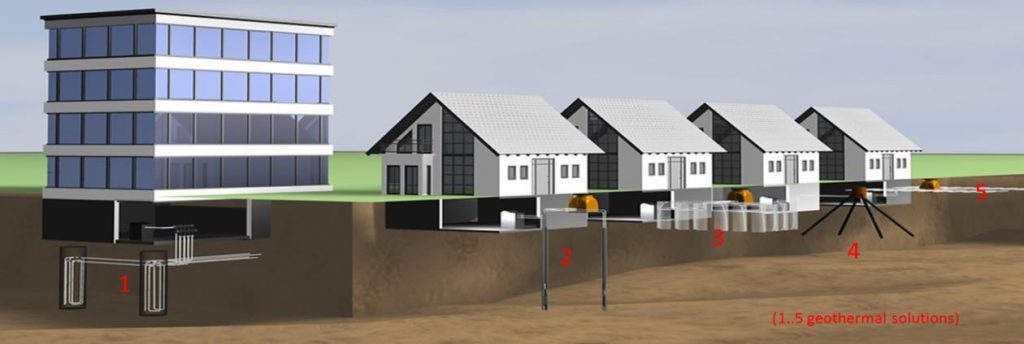NEA’s mission is to develop high-efficiency products and processes in the frame of the renewable energies sector market, by enhancing the thermal exploitation and optimizing the environmental issues from both subsoil and sea (hydrogeothermy).
Our goal is to offer ad hoc energy solutions with a low environmental impact, independent of fossil fuel prices, which is constantly available 24/24h for 360 days a year.
Our work is dedicated to those who own, build or replace a heating and/or cooling system, like private individuals, public bodies, energy suppliers and distributors, and companies involved in the production of medium to large plants that combine energy production from renewable sources with minimum CO2 emissions and with cost saving.
NEA’s partnership with companies leader in geothermal probes, materials and manufacturers of heat pumps, will help us to optimize some segments of the complex geothermal chain with economic benefits both for NEA and for the end-user of the technological innovation.
For NEA, the strong relationship with the academic innovation and research represents an added value, which is crucial for addressing the global market competition.

Example of geothermal plant for heating, cooling and sanitary water production.
Why geothermy
According to the U.S. Department of Energy, Geothermal Heat Pumps (GHPs) are among the most efficient and comfortable heating and cooling technologies available, because they use the earth’s natural ability to supply or absorb heat at extremely high efficiencies.
The European Climate and Energy Framework for 2050 aims to shift from the massive use of fossil sources to others characterized by very low emissions. Among the renewables sources, geothermal energy is the only one which is available basically everywhere and at any time (day/night and four seasons), and in case of low enthalpy explotable for both heating and cooling, with obvious environmental and economic benefits.
GHP systems are commonly used to provide heating, cooling and domestic hot water to houses, schools, hospitals, sport facilities, greenhouses, industrial warehouses, as well as commercial and governmental buildings.
A major advantage in using the constant temperature of the ground (or sea water) instead of the highly variable ambient temperature is the fact that the overall energy required by the GHPs is much less in the former case and more easily quantified. Indeed, a few meters below the earth’s surface, the soil remains at a relatively constant temperature during the whole year. Depending on latitude, ground temperatures range from 10°C to 18°C. Like a cave, this ground temperature is warmer than the air during the winter and cooler in the summer. The GHPs take advantage of this thermal difference by using the ground as a heat exchanger.


